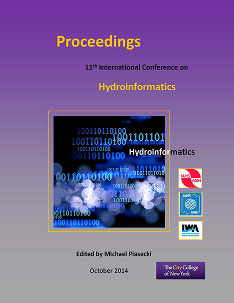Document Type
Presentation
Publication Date
8-1-2014
Abstract
Many studies have shown the effectiveness of blackbox optimization algorithms for the calibration of lumped conceptual hydrological models. Among these algorithms, the « Shuffled Complex Evolution method developed at the University of Arizona » (SCE-UA) is a very popular one. However, when it comes to calibrating distributed and/or physically-based models, computational efficiency becomes an issue. A single simulation with this type of model may take several minutes and the optimization process may require more than thousands of simulations. To alleviate this problem, two recently developed optimization methods, « Dynamically Dimensioned Search » (DDS) and « Nonsmooth Optimization by Mesh Adaptive Direct search » (NOMAD), adapt their search strategy based on the available budget of simulations. This work aims to verify the computational efficiency of DDS and NOMAD for the calibration of the HYDROTEL model (distributed and physically-based). Two versions of the model are used, one with 10 parameters and one with 19 parameters, and they are both applied to two different watersheds located in the province of Quebec (Canada). A second, lumped conceptual, model (HSAMI) is also applied to both watersheds to examine the impact of model structure on the results. Each combination of model-watershed is calibrated with each one of the optimization algorithms: DDS and NOMAD. SCE-UA is also used as the benchmark for comparison. The objective function uses the Nash-Sutcliffe Efficiency criterion, and is computed between simulated and observed streamflows. For every combination of model-watershed-algorithm, calibrations are repeated 32 times and the mean results are shown. This research sheds a better light and understanding on the efficiency of the three optimization algorithms for computationally intensive calibration problems, and on the model-related characteristics of the optimization problem.



Comments
Session R64, Parameter Estimation: Calibration